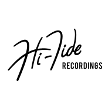Ric12string

Joined: Jan 29, 2017
Posts: 27

|

Posted on Mar 09 2019 11:43 AM
When you have a Bass VI carrying the melody in a song, what do you do with the actual bass player? Two people playing in the same sonic range can get pretty messy, I would think. Is the Bass VI part substituted for the regular bass line?
— The Sun Rays -- The Sierra's Surf Band
Last edited: Mar 09, 2019 11:45:22
|
revmike

Joined: Feb 26, 2006
Posts: 3794
North Atlantic








|

Posted on Mar 09 2019 12:09 PM
I would say keep the bass line simple, and make sure that sonically their tones are different. The bass vi could be eq-ed to bring out the upoer mids and treble, while the bass would occupy more of the lower eq. Really anything goes as long as you like the sound of it.
Rev
— Canadian Surf
http://www.urbansurfkings.com/
|
montereyjack66

Joined: Jul 23, 2014
Posts: 637
LA -ish






|

Posted on Mar 09 2019 01:26 PM
I've had a Bass VI for about five years. It is a fairly unique animal unto itself. In my last band, a three piece called Sandblast we used it in a half dozen songs. I've played mostly bass in my life but also guitar in a few bands. 1. Set the "RULE BOOK" aside for a bit. 2. Do you need it to be a guitar, a bass, both, or something else? In Sandblast, I had little choice but to do the "both" option. We used it where it worked and was appropriate. The VI does have a nice bottom but not a BIG BOTTOM and is less effective for some purposes. (one advantage, it also helps as a back up should the 4 banger abandon ship half way through a live gig). 3.The more instruments you have, the more attention you need to pay to the sonic space. If the main bass is still in the sonic picture, it's a good idea to use the bass cut feature on the VI. That will help both be heard clearly. 3. Abandon the idea that all instruments have to be playing at all times. It is OK for the VI or any other instrument to rest for more than 16 beats. 4. The six can be used for a traditional bass role, atmospherics and fills, featured melody lines, unison work with any instrument you choose, call and response, counterpoint, (don't forget your neighborhood fuzz pedal) and probably a dozen other things I haven't even tried yet. 5. Playing single strings hard is fine but a lighter touch for chord work for most efforts seems best to my ear. 6. The PUPS are actually pretty good but they are low octane. A clean-(ish) pre-amp makes a WORLD of difference in a number of ways. 7. It is also possible for the VI to carry an entire song on it's own. 8. It can be a gift to your audience in terms of variety (let's face it, 4 guitars, no vocals, and a lot of reverb starts to run together after a while. The VI helps to counter some of that mid set. 7. Mainly, step back and listen to what your sound is like. Then, think like a big band leader or an orchestra conductor instead of like a guitar player. (It may help to roll off a little low end on the guitars too. Heretic talk! Listen to the early Ozzy albums. Rhoads but his guitar on a real sonic shelf with little low end, which opened up sonic picture for Bob Daisley on bass). 8. Listen to your bass player. They actually understand a few things about the roll of bass that maybe you are less aware of.
In the spirit of runaway vanity, I've included links to a couple of things I've done as mere examples. Good luck!
https://www.youtube.com/watch?v=AKBXWFKp3as
https://www.youtube.com/watch?v=W8-s0H_C7Yg
And some Glenn Campbell because it's good for all living things...and it has a bass VI.
https://www.youtube.com/watch?v=AxSarBcsKLU

— mj
bent playing for benter results
Do not attempt to adjust your TV set.
https://www.facebook.com/Bass-VI-Explorers-Club-179437279151035/
https://www.facebook.com/Lost-Planet-Shamen-366987463657230/

|
Ric12string

Joined: Jan 29, 2017
Posts: 27

|

Posted on Mar 10 2019 10:29 AM
Thank you very much for these thoughts. Any other helpful suggestions?
— The Sun Rays -- The Sierra's Surf Band
|
Reverb17

Joined: Jun 14, 2006
Posts: 506
NYC





|

Posted on Mar 10 2019 11:08 AM
Switch it over to a baritone tuning:B or A.
If it's a 30" scale you can play in "A" tuning no problem.
I use "A". Also switch to a somewhat lighter gauge of strings so that the high "A" and high "E" have unwound strings. That will bring out the twanginess. The reverb will also separate you from the bass in the mix.
Here are 2 baritone songs we recorded.
Man From Nowhere
The Last Race
— TarantinosNYC
TarantinosNYC FB page
The WrayCyclers FB page
Rockaway Beach Surf Music Festival
|
synchro

Joined: Feb 02, 2008
Posts: 4413
Not One-Sawn, but Two-Sawn . . . AZ.





|

Posted on Mar 10 2019 11:40 AM
Ric12string wrote:
Thank you very much for these thoughts. Any other helpful suggestions?
As I see it, there are two approaches. The first approach is to use the VI as a bass with an extended upper range. I did this in a band I played with some years back. I played “lead bass”, bass lines that included fills and counter melodies. The guitar in that band played only rhythm and the bass took up a lot of slack.
The second approach is to use the VI as a lead guitar, which means that the bass player has to coordinate with the VI player and may have to lay out when the VI is playing melody notes in the lowest part of the range. When I’ve used the VI in this manner, I usually request that the bassist stay as close as possible to the bottom of the range and keep the bass part simple, maybe half notes or even sustained whole notes, during the solo taken by the VI.
Personally, I’ve have never seen much reason for an A-A or B-B baritone. A VI is plenty plenty twangy and there’s no problem with running out of upper range. With A-A or B-B tuning, you are only adding a fourth or fifth to the bottom of the range. If I wanted to do that, I’d probably just go with a seven string guitar.
— The artist formerly known as: Synchro
When Surf Guitar is outlawed only outlaws will play Surf Guitar.
|
Surfing_Sam_61

Joined: Jan 15, 2019
Posts: 1515
|

Posted on Mar 10 2019 11:58 AM
If you want studio sound on stage you might want to get a Baritone guitar to fill the gap between Bass and Guitar - but the tuning messes me up musically. That's what a lot of classic good surf recordings have on them. I never see those in any live surf band and they are on a lot of recordings from the 1960's. The neck is longer than a guitar.
There was a studio band that had two bass players that played a octave apart or doubled the notes that way, you could do that with the VI and a bass etc
Last edited: Mar 10, 2019 11:59:24
|
WoodyJ

Joined: Apr 05, 2006
Posts: 1544
Bethlehem, GA






|

Posted on Mar 11 2019 08:43 AM
Surfing_Sam_61 wrote:
There was a studio band that had two bass players that played a octave apart or doubled the notes that way, you could do that with the VI and a bass etc
Another way to accomplish that would be to play the Bass VI through an octave pedal like the Boss OC-3 that allows the direct signal along with a signal one or two octaves below the direct note.
I used the predecessor to this pedal in the '80's for the bass part in Berlin's "Take My Breath Away" (from the Top Gun movie) which had an odd but effective "octaved" bass part. The Berlin version was effected beyond 'just an octave below' but I believe that an octave pedal that would allow even just one octave below the note played would work nicely with a Bass VI for the 'two basses' sound. Here's the Berlin song:
https://www.youtube.com/watch?v=Bx51eegLTY8
These days I am using an Electro Harmonix POG (Polyphonic Octave Generator) pedal which can go an octave below AND an octave above the fundamental note with each function being independently adjustable. It is the most incredibly versatile pedal on my pedalboard and works equally well with guitar, bass and even my trumpet. It also nails the 12-string guitar sound with a 6-string, using the 'octave up' knob.
— Jack Booth
(aka WoodyJ)
The Mariners (1964-68, 1996-2005)
The Hula Hounds (1996-current)
The X-Rays (1997-2004)
The Surge! (2004, 2011-2012)
Various non-surf bands that actually made money (1978-1990)
|




































